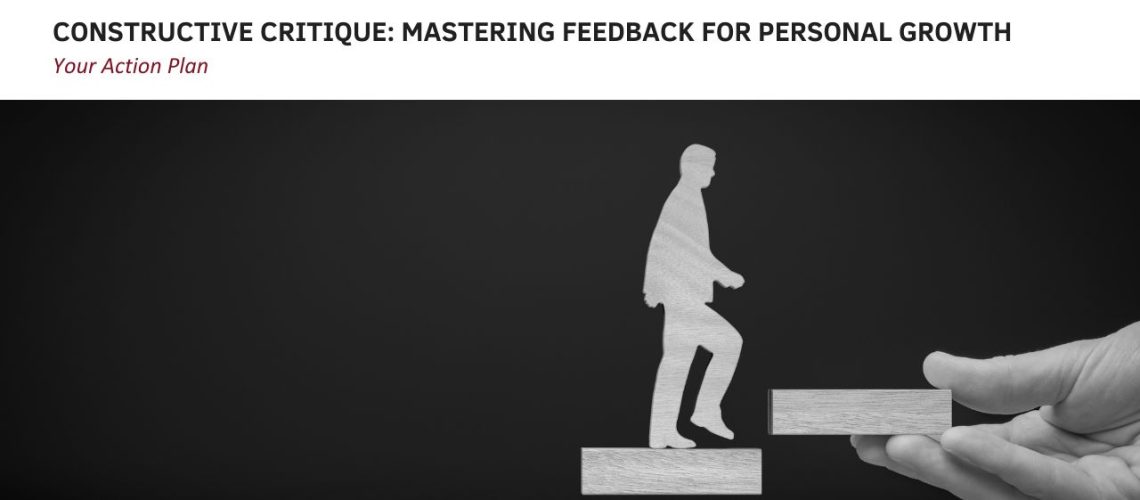By Dr. Salam Slim Saad
In the search for personal growth and development, few tools are as powerful as constructive critique. Picture this: You’re on the brink of launching your passion project, pouring hours of dedication and creativity into every detail. But as you unveil it to the world, instead of applause, you’re met with criticism. How do you react? Do you crumble under the weight of negativity, or do you rise, armed with the knowledge that feedback, when wielded wisely, can be your greatest ally?
Welcome to the world of constructive critique, where feedback isn’t just a means of judgment but a spark for growth. In this blog post, we delve deep into the art of receiving and giving constructive criticism, unlocking its transformative potential for personal evolution. Whether you’re an aspiring entrepreneur, a budding artist, or someone striving for self-improvement, mastering the art of feedback is your ticket to unlocking untapped potential and achieving your goals.
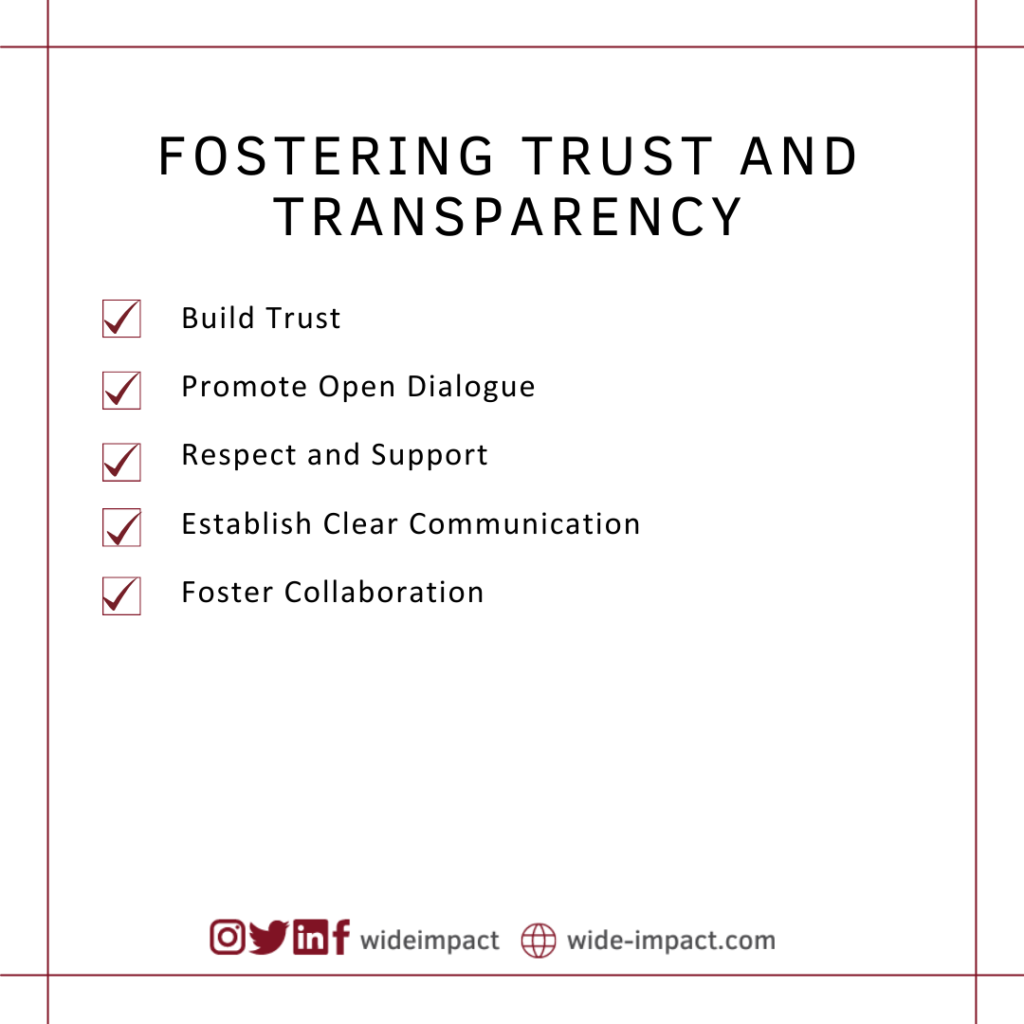
- Clarifying Goals and Expectations: Feedback serves as a compass, guiding individuals and teams toward their goals and helping them understand expectations. When giving feedback, be clear about what specific behaviors or outcomes you’re addressing and how they align with overarching objectives. Likewise, when receiving feedback, seek clarification on areas where improvement is needed and how they relate to your goals.
- Providing Constructive Criticism: Effective feedback is constructive rather than destructive. When offering criticism, focus on specific behaviors or actions rather than attacking the individual’s character. Use the “sandwich” approach by sandwiching constructive criticism between positive feedback and offering suggestions for improvement. This approach helps maintain morale and motivation while addressing areas for growth.
- Encouraging Growth Mindset: Feedback plays a crucial role in cultivating a growth mindset, where individuals view challenges as opportunities for learning and development. Encourage a culture of open communication and continuous improvement by framing feedback as a tool for growth rather than a judgment of competence. Emphasize the importance of resilience and perseverance in the face of setbacks and celebrate progress and milestones along the way.
- Actively Listening: Effective feedback requires active listening from both parties. When giving feedback, take the time to listen to the recipient’s perspective and address any concerns or questions they may have. Similarly, when receiving feedback, practice active listening by acknowledging the feedback, asking clarifying questions, and expressing gratitude for the insights provided.
- Fostering Trust and Transparency: Trust is the foundation of effective feedback exchange. Build trust within your team or organization by fostering an environment of transparency and mutual respect. Encourage open dialogue and constructive criticism and ensure that feedback is given and received in a timely and respectful manner. By creating a safe space for feedback, individuals can feel empowered to share their thoughts and ideas without fear of judgment or reprisal.
Understanding Constructive Criticism
Constructive criticism is feedback aimed at helping the recipient improve their performance or behavior. It is specific, actionable, and delivered to foster growth and development. Constructive criticism focuses on the behavior or actions rather than attacking the person’s character. For example, instead of saying, “You’re lazy,” constructive criticism might be, “I noticed that you missed the deadline for the project. In the future, let’s work together to establish a realistic and achievable timeline.”
Tips for Giving Constructive Critique
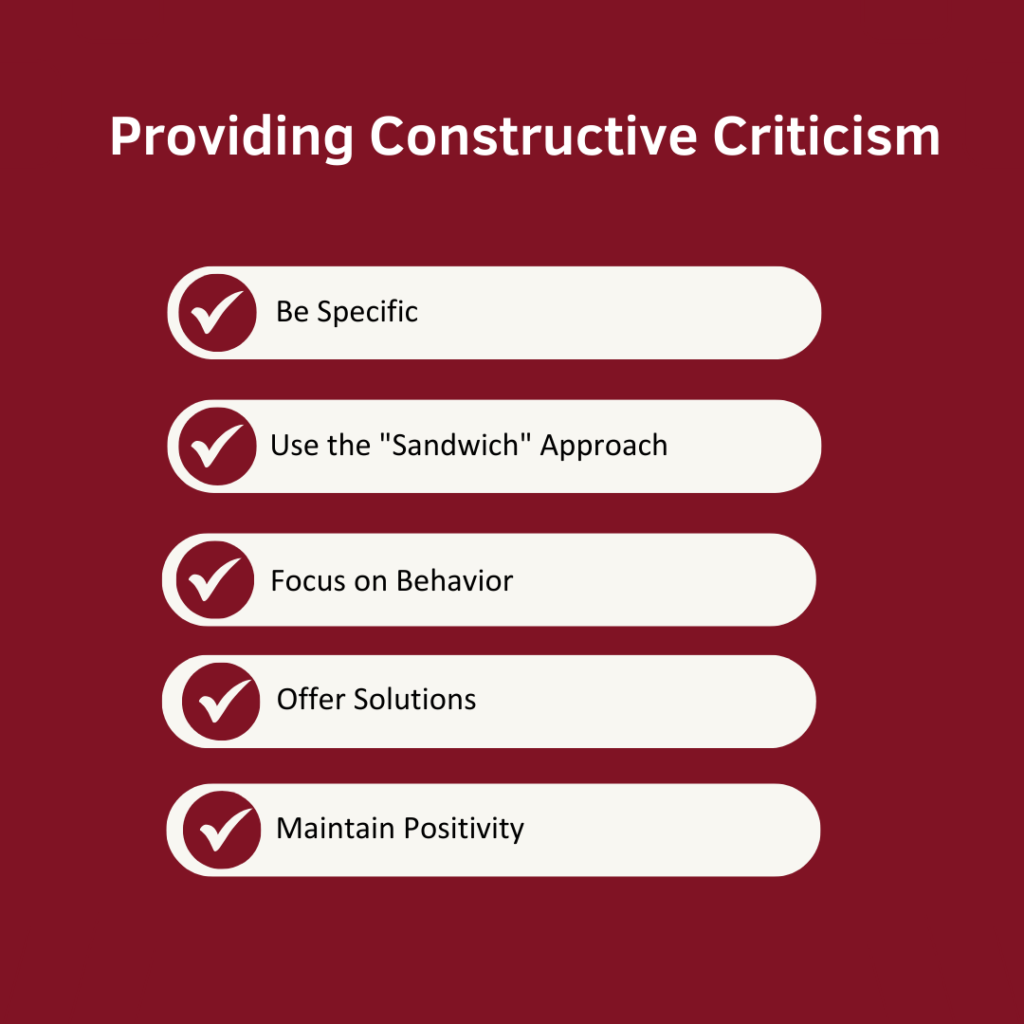
- Be Specific and Objective: When giving constructive criticism, it’s essential to be specific about what needs improvement and provide concrete examples. Avoid vague or general feedback and focus on the behavior or outcome that you want to address. Additionally, strive to be objective rather than letting personal biases or emotions influence your feedback.
- Use the “Sandwich” Approach: The “sandwich” approach involves sandwiching constructive criticism with positive feedback. Start by highlighting something positive about the person’s work or behavior, then offer the critique and end on a positive note. This approach helps balance the feedback and makes it easier for the recipient to accept.
- Focus on Behavior, Not Personality: When giving feedback, focus on specific behaviors or actions rather than making judgments about the person’s character or personality. This helps ensure that the feedback is constructive and actionable rather than feeling like a personal attack.
- Offer Solutions or Suggestions for Improvement: Instead of just pointing out what’s wrong, offer suggestions or solutions for how the person can improve. This shows that you’re invested in their growth and success and gives them a clear path forward.
- Be Timely and Private: Offer feedback in a timely manner, ideally as soon as possible after the behavior or event occurs. Additionally, provide feedback in a private setting to avoid embarrassing the person or causing them to feel defensive. This allows for open and honest communication without distractions or interruptions.
- Encourage Dialogue and Collaboration: Feedback should be a two-way conversation rather than a one-sided critique. Encourage the recipient to ask questions, share their perspective, and offer their own ideas for improvement. This collaborative approach fosters trust and mutual respect and leads to more meaningful and productive feedback discussions.
Recognizing Destructive Criticism
Destructive criticism, on the other hand, is feedback that is intended to harm rather than help. It often involves personal attacks, vague statements, or overly harsh language. Destructive criticism can erode confidence and motivation if not handled properly.
Tips for Handling Destructive Criticism:
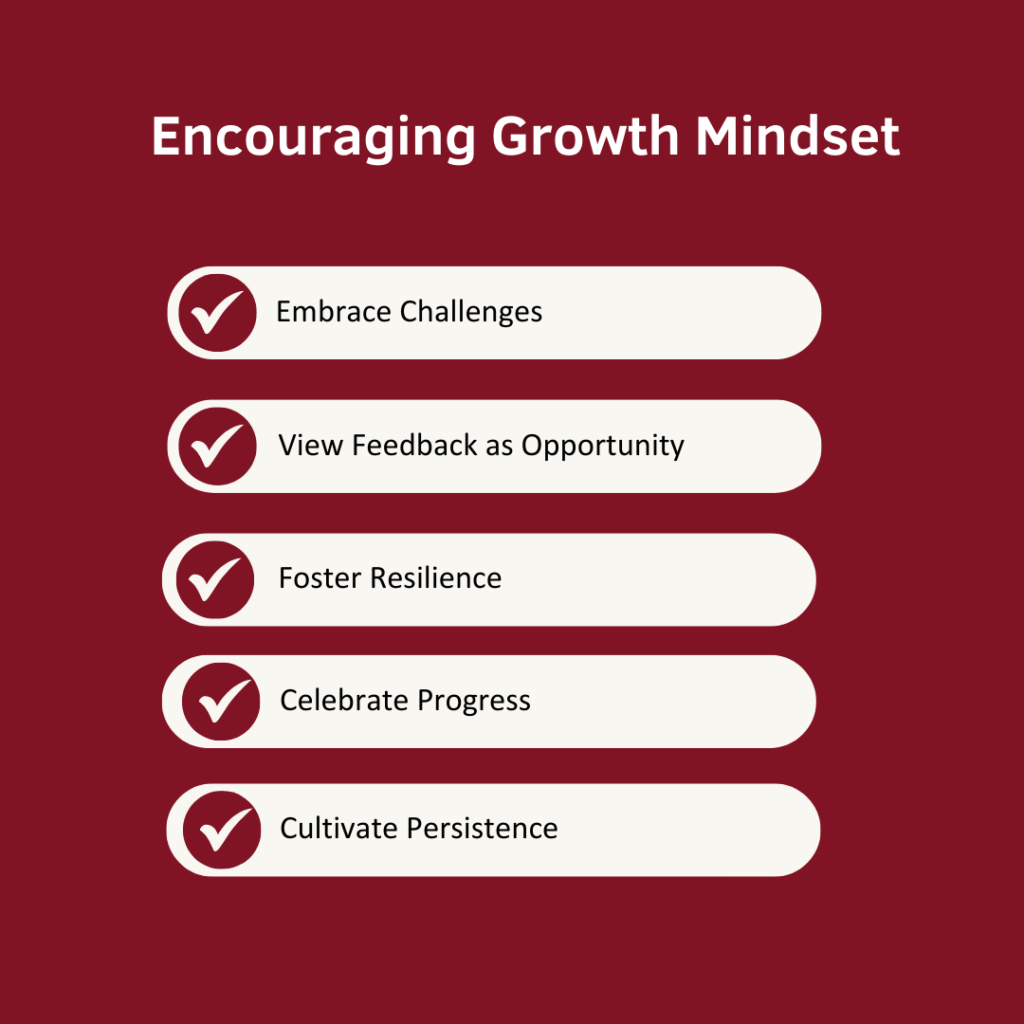
- Stay Calm and Composed: When faced with destructive criticism, it’s essential to remain calm and composed. Take a deep breath and resist the urge to react impulsively or defensively. Maintaining your composure allows you to approach the situation with clarity and rationality, enabling you to assess the feedback objectively and determine its validity.
- Evaluate the Source: Before internalizing destructive criticism, take a moment to evaluate the source of the feedback. Consider the intentions and motivations of the individual delivering the critique. Is the criticism coming from a place of genuine concern and a desire to help you improve, or is it rooted in personal biases or negative emotions? By understanding the source of the criticism, you can better contextualize and respond to the feedback.
- Extract Constructive Insights: Even amidst destructive criticism, there may be nuggets of constructive feedback that you can glean for personal or professional development. Look beyond the negativity and identify any specific suggestions or actionable advice that can help you improve. Focus on extracting valuable insights from the criticism while disregarding the unhelpful or hurtful comments.
- Practice Self-Compassion: Handling destructive criticism can be emotionally challenging, leading to feelings of self-doubt and inadequacy. During such times, it’s crucial to practice self-compassion and kindness towards yourself. Remind yourself that everyone experiences criticism at some point in their lives and that receiving negative feedback does not diminish your worth or capabilities. Treat yourself with the same kindness and understanding that you would offer to a friend facing a similar situation.
- Seek Support: Don’t hesitate to seek support from trusted friends, family members, or colleagues when faced with destructive criticism. Reach out to individuals who can offer perspective, encouragement, and reassurance during difficult times. Having a supportive network can provide emotional validation and help you navigate the challenges of handling criticism with greater resilience and confidence.
- Set Healthy Boundaries: Lastly, it’s essential to set healthy boundaries when faced with destructive criticism that crosses the line into personal attacks or abuse. Politely but assertively assert your boundaries, expressing your willingness to receive constructive feedback while refusing to tolerate disrespectful or harmful behavior. Remember that you have the right to protect your mental and emotional well-being from toxic influences.
Overcoming Fear and Resistance to Feedback
Feedback is a valuable tool for personal and professional growth, yet many struggle to embrace it wholeheartedly. Whether it’s fear of criticism or resistance to change, overcoming these barriers is essential for unlocking our full potential. Here is some practical tips and tricks to help you conquer your fear and resistance to feedback:
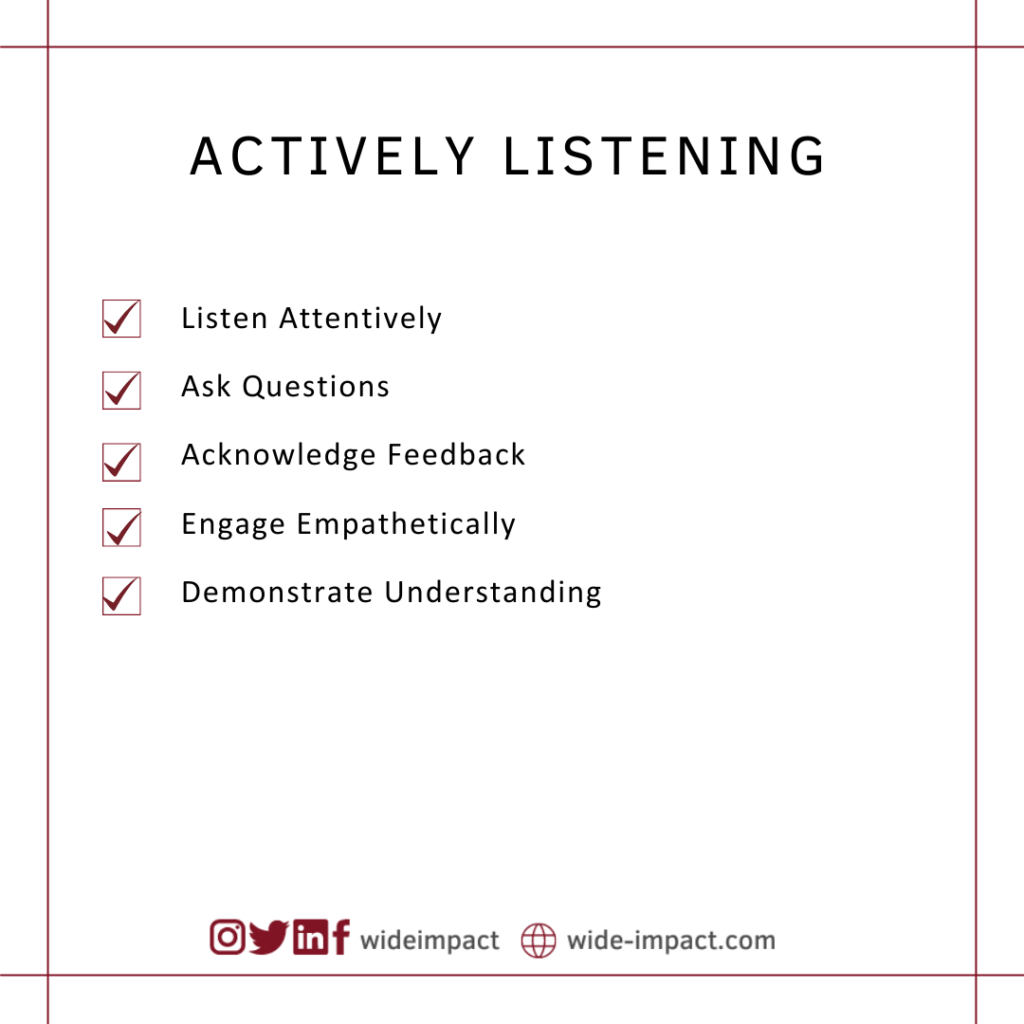
- Shift Your Mindset: Rather than viewing feedback as a threat to your self-esteem, reframe it as an opportunity for learning and growth. Adopting a growth mindset allows you to see feedback as valuable insights that can help you improve and succeed.
- Seek Specific Feedback: When requesting feedback, be specific about what you want to learn or improve upon. Instead of asking for general feedback, ask targeted questions that will provide actionable insights. This not only makes feedback more manageable but also more valuable.
- Embrace the Power of Positive Feedback: While constructive criticism is important for growth, don’t overlook the value of positive feedback. Acknowledging your strengths and successes can boost your confidence and motivation, making it easier to accept areas for improvement.
- Practice Active Listening: When receiving feedback, practice active listening by fully engaging with the feedback provider. Avoid interrupting or becoming defensive; instead, focus on understanding their perspective. Ask clarifying questions if needed and demonstrate your willingness to learn and grow.
- Take Feedback Seriously, Not Personally: It’s natural to feel defensive when receiving feedback, especially if it’s critical in nature. However, remember that feedback is about your actions or behaviors, not your worth as a person. Separate your identity from the feedback and focus on how you can use it to improve.
- Implement Actionable Steps: After receiving feedback, take proactive steps to implement the suggested changes or improvements. Break down larger goals into smaller, manageable tasks and create a plan for addressing each one. Regularly review your progress and adjust your approach as needed.
Finally, learning to give positive criticism is more than just a skill; it’s a way of thinking that can help you grow and succeed in ways you never thought possible. Accepting comments as a way to get better instead of as a source of criticism opens the door to improving your skills, getting past problems, and reaching your highest goals. Remember that the path to personal growth isn’t always easy. But if you know how to deal with feedback correctly, every loss can become a chance to rise higher. As you work to improve yourself, I encourage you to keep asking for feedback and improve at giving and receiving helpful criticism with grace and strength. Your trip doesn’t end here; it’s just getting started. So, put what you’ve learned to good use, and watch yourself become the best version of yourself.


